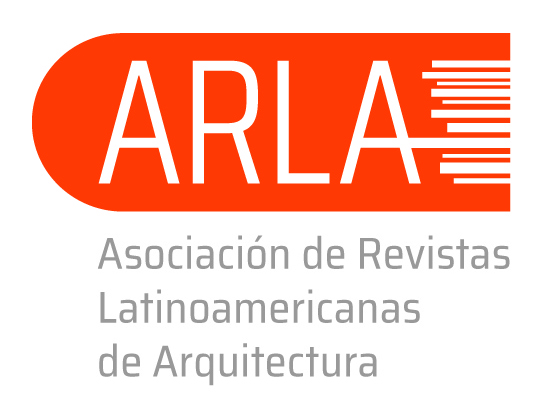Información para autores
Publication standards
ARTICLES SUBMISSION
- CLARIFICATIONS AND CONDITIONS
1.1. ARQUISUR Revista operates on the Open Journal System (OJS) platform, administered by the National University of the Litoral (UNL). In order to submit an article, each author must activate their own OJS account and proceed to upload the digital files according to the instructions provided by the system.
1.2. All material must be uploaded to OJS as a supplementary file:
The text of the article must be in “doc” or “docx” format and will include images, plans and/or tables in low resolution and in an indicative manner to indicate its position within the article. Images must also be uploaded separately in “jpg”, “tiff” or “png” format, in high resolution (minimum 300 dpi) and uncompressed. Plans will be uploaded in editable “pdf” format, published in press quality. They must contain references, graphic or numerical scale, north, coordinates, location, etc. Tables and graphs will be uploaded in editable format. Depending on the length of the article, 5 to 10 figures should be included, including images, plans, tables and graphs. These figures must be referenced to the text they illustrate, named according to their type, numbered and must indicate their source. The author is responsible for acquiring reproduction rights and/or authorizations for files taken from other sources, if applicable.
1.3. The nominated articles must be original and unpublished and must not be simultaneously nominated for publication in other journals or editorial bodies. It will be accepted a maximum of five authors per article.
1.4. ARQUISUR Revista accepts the following categories of articles:
Scientific and technological research article: a document that presents in detail the original results of completed research projects. The structure used generally contains four important parts: introduction, methodology, results and conclusions.
Reflection article: a document that presents, from an analytical, interpretive or critical perspective the results of a completed investigation, resorting to original sources.
Review article: a document resulting from a completed investigation where the results of published or unpublished research on a field in science or technology are analyzed, systematized and integrated, in order to account for advances and development trends. It is characterized by the presence of a careful bibliographic review of at least 50 references.
Other types of documents: a short article, a case report, a topic review, a document resulting from the critical review of the literature on a particular topic, letters to the editor, a translation, a reflection document not derived from research and bibliographic review, et cetera.
1.5. ARQUISUR Revista’s thematic axes are:
Architectural project
Technologies and sustainability
History of architecture, the city and urban planning
Teaching of project disciplines
City and territory
Form and communication
- PRESENTATION FORMALITIES
2.1. First page content. MANDATORY information
2.1.1. Data from each author: full name and surname, institutional affiliation (Institute, Faculty and/or Department and University), country, contact email and ORCID (This is a persistent digital identifier, in case of not having it will be necessary to enter ORCID and generate it).
IMPORTANT: the order of the authors must be related to the level of participation of each person in the production of the article.
Example:
Regina Falange Gueler
Research Laboratory in Architectural Theory and Practice
Faculty of Architecture, Design and Urban Planning
National University of the Litoral
Argentina
reginafalange@gmail.com
ORCID: https://orcid.org/0000-0002-6825-8904
2.1.2. Brief biographical summary of each author: should contain between 50 and 100 words and be written in a single paragraph. This information will be included in the html format of the magazine.
Example:
Regina Falange Gueler. Architect Faculty of Architecture, Design and Urban Planning. National University of the Litoral, 1989). Doctor (ETSAM, Polytechnic University of Madrid, 2015). Head professor Exclusive dedication Taller Austral (FADU, UNL). Category 1 Researcher in the SPU Incentive Program. She has published individual and co-authored books, as well as in national and foreign specialized magazines. She is currently researching the history of architectural education.
NOTE: it is essential that the data recorded in 2.1.1 and 2.1.2 and the ORCID information coincide.
2.1.3. Introductory content of the article
Title: in Spanish, Portuguese and English. It should not exceed 15 words.
Subtitle: it is included in the maximum length of the title and it is optional.
Summary: presented in the language of origin (Spanish or Portuguese) and in English (abstract); It is written in a single paragraph and explains the topic, objective, central aspects and conclusions of the article. It should not exceed 200 words.
Five keywords: arranged alphabetically, in the language of origin (Spanish or Portuguese) and in English (keywords). They serve to classify the article thematically and must be selected from the subject tables of the UNESCO Thesaurus or the Network of Architecture Libraries of Buenos Aires, Vitruvius.
2.2. Second and subsequent pages
Text length and format: “.doc” or “.docx” file, written in a single column, without formatting, with double spacing in 12-point font and numbered pages. Length between 4000 and 6000 words, including notes, bibliographic list and image references. Short articles should not exceed 2000 words.
Suggested structure for the article: introduction, development and conclusions; methodology, results and discussion, if applicable.
IMPORTANT:
In the introduction, the type of article must be made explicit (research, reflection, review or other categories accepted by ARQUISUR Revista). If required, it must also be named the research and/or postgraduate group of which the article is the result, or the framework in which the work is developed and the funding entity.
The text must respect what is indicated in items 2.3 and 2.5 of these publication standards.
At the end, there must be presented the acknowledgments (if any), the Declaration of authorship (item 2.4), the bibliography (item 2.5) and the supporting data of the research (item 2.6).
2.2.1. Details to be taken into consideration
Acronyms: complete equivalences must be provided the first time they are used, both in the text and in tables or images. In the case of citing well-known figures, full names and/or surnames must be included, never using abbreviations.
Images: tables, graphs, diagrams, illustrations and photographs must contain a brief explanatory legend (maximum 15 words) and their origin (author and/or source, year, page).
2.3. CITATION RULES
2.3.1. Footnotes: these clarifications should not exceed five lines or 40 words, otherwise they will be incorporated into the general text. They must not be used to cite bibliography.
2.3.2. Short textual quote (less than 40 words): included in the text and enclosed in double quotes. Below is the bibliographic reference in American Psychological Association (APA) format.
2.3.3. Extensive textual citation: included in a separate, independent paragraph, omitting the quotation marks, followed by the APA reference.
2.3.4. Format of bibliographical references according to APA standards:
Author's last name, year of publication, period and page number, without space between.
Example: (Derrida, 2000. p. 49).
If the reference is made to a single work, the year is omitted.
Example: (Derrida, p. 32).
If other references are made to the same work in the same paragraph, only the page numbers will be indicated.
Example: (p. 38), (p. 54).
If the work has two authors, both surnames will be mentioned.
If the work has between three and five authors, in subsequent mentions only the last name of the first author will be written followed by et al.
If there are more than six authors, the last name of the first author will be written followed by et al. after the first mention.
Note: for further details, you can consult the APA standards manual in Spanish.
2.4. STATEMENT OF AUTHORSHIP
For articles nominated for co-authorship or that have required the participation of other collaborators, a declaration of the different roles of authorship and participation must be included. To determine this classification (data visualization, research, writing, among others), we suggest consulting the taxonomy of academic collaboration networks (CRediT). Otherwise, the authors must declare, in a legend with their initials: “XX. and YY. jointly contributed to the writing of this article.”
2.5. BIBLIOGRAPHY
It is the list of bibliographic references made according to APA standards, located at the end of the article and in alphabetical order. All citations (textual or not) must correspond to a bibliographic reference. Any source or bibliography that is not referenced in the text should NOT be included.
CLARIFICATION: current indexing formats for academic publications require strict control of this correspondence between references within the text and what is included in the final list.
Details to take into consideration while compiling the bibliography:
Works should be arranged alphabetically by author's last name. If several works by the same author are mentioned, these will be in chronological order, starting with the oldest.
If in the same year there are more than one work of equal authorship, their order must be indicated with letters (1997a,1997b).
If the work has between two and seven authors, the last name and first initial of all of them must be indicated.
If the work has eight or more authors, the last name and initial of the first name of the first six will be indicated, then an ellipsis (...) and finally the last name and initial of the first name of the last author.
If the work has a compiler (Comp.) or director (Dir.), it must be identified by his or her last name.
If the work does not have an author, the title of the work will be stated first and then the date.
If the work does not have a date, the surname and first name of the author will be indicated and then (s. f.).
In works in a foreign language, the capital letters of the original titles will be maintained.
If the book has more than one edition and you are interested in identifying it, after the title it must be stated in parentheses which of them is being referred to.
To see examples, access here.
NOTE: to download presentation formalities, citations and bibliography, access here.
2.6. SUPPORTING DATA OF THE RESEARCH
The authors must ensure the availability and preservation of the data used in the articles presented in accordance with Law No. 26,899 on Digital Repositories. If the article is accepted, prior to publication, it is recommended that the data generated should be deposited in one of the research repositories (e.g.: SciELO Data). The aim is to include the complete citation of the data, which facilitates the location of the article, its validation, metrics and impact, enhancing the transparency of the research.













